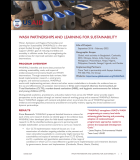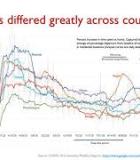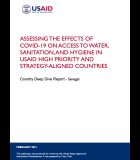Feed the Future Senegal Yaajeende
The food security situation in Senegal in 2013, illustrated by the Global Hunger Index (GHI) score of 13.8, was characterized by the International Food Policy Institute (IFPRI) as “serious.” 2 This situation is all the more serious in that, at 13.7 in 2005, the country’s GHI score has remained unchanged for nearly a decade. Food insecurity in Senegal affects between 15.6 and 24 percent of the population, with higher numbers concentrated in the northern and eastern rural regions.
Activity Description
USAID|Yaajeende1 is a five-year Feed the Future (FtF) project designed to reduce malnutrition in the Matam and Kédougou regions as well as the Department of Bakel — an area representing the northeastern one third of Senegal. The project’s goal is to accelerate the participation of the very poor in rural economic growth and to improve the population’s nutritional status. The development hypothesis of USAID|Yaajeende, one of USAID’s first FtF projects, is that an integrated approach to agriculture, economic growth, and nutrition can lower the rate of undernutrition much more rapidly than by focusing on agriculture or economic growth alone.
USAID|Yaajeende activities are divided into five major areas: increasing the availability of food by improving the diversity and sustainability of agricultural production and promoting sustainable land management; increasing and diversifying revenues from agriculture by stimulating key agricultural markets and value chains; reducing undernutrition and ensuring a healthy diet through improved utilization of foods; improving capacity for local governance of food-related resources; and cross-cutting activities, such as expanding the role of women in food security and nutrition.
Expected Outcomes
• Engage in country-led, integrated approach to accelerate the participation of 500,000 rural poor in growth
• Reduce malnutrition in children under 5 years old by: 30% reduction in underweight and 30% reduction stunting
Actual Outcomes
• 781 CBSPs (including CNVs) are active
• 827 CBSPs have received partial training and are now being integrated into the project’s CBSP networks
• 128 CBSPs sold more than USD $758,000 of subsidized and nonsubsidized inputs, exceeding the target of $600,000
• Increased consumption of micro-nutrient rich vegetables among participants by an average of 21 kg each and sales of garden produce of USD $160,000
• Community Nutrition Volunteers (CNV) used social marketing to increase access to fortified food and nutrition products
• 25 Citizen Working Groups established strong model for public/private engagement allowing the project to achieve scale and conduct innovative activities





